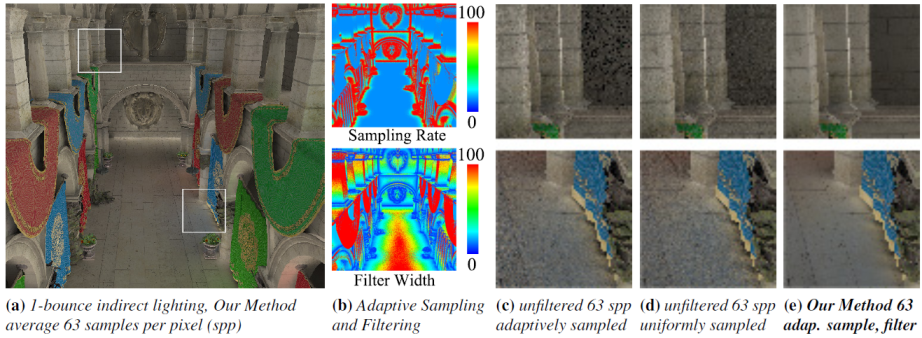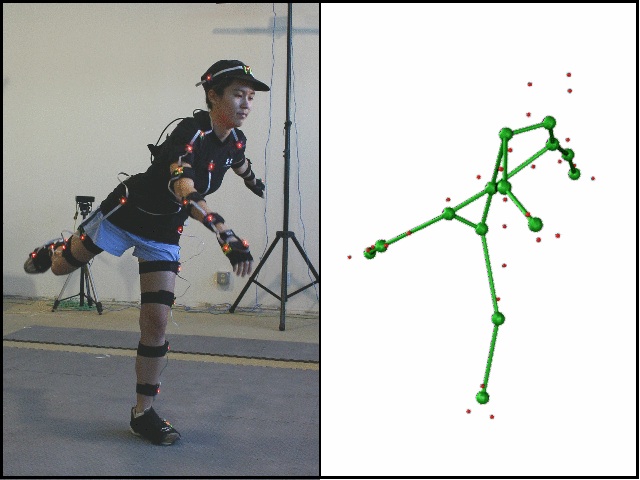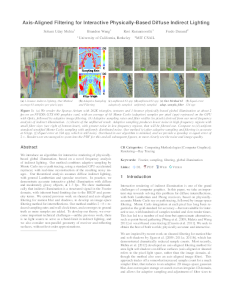Axis-Aligned Filtering for Interactive Physically-Based Diffuse Indirect Lighting
Abstract
We introduce an algorithm for interactive rendering of physically-based global illumination, based on a novel frequency analysis of indirect lighting. Our method combines adaptive sampling by Monte Carlo ray or path tracing, using a standard GPU-accelerated raytracer, with real-time reconstruction of the resulting noisy images. Our theoretical analysis assumes diffuse indirect lighting, with general Lambertian and specular receivers. In practice, we demonstrate accurate interactive global illumination with diffuse and moderately glossy objects, at 1-3 fps. We show mathematically that indirect illumination is a structured signal in the Fourier domain, with inherent band-limiting due to the BRDF and geometry terms. We extend previous work on sheared and axis-aligned filtering for motion blur and shadows, to develop an image-space filtering method for interreflections. Our method enables 5-8 times reduced sampling rates and wall clock times, and converges to ground truth as more samples are added. To develop our theory, we overcome important technical challenges - unlike previous work, there is no light source to serve as a band-limit in indirect lighting, and we also consider non-parallel geometry of receiver and reflecting surfaces, without first-order approximations.
Citation
Soham Uday Mehta, Brandon Wang, Ravi Ramamoorthi, and Fredo Durand. "Axis-Aligned Filtering for Interactive Physically-Based Diffuse Indirect Lighting". ACM Trans. Graph., 32(4), July 2013.
Supplemental Material

Figure 1
(a) We render the Sponza Atrium with 262K triangles, textures and 1-bounce physically-based global illumination at about 2 fps on an NVIDIA GTX 690 graphics card, with an average of 63 Monte Carlo (adaptive) samples per pixel (spp) raytraced on the GPU with Optix, followed by adaptive image filtering. (b) Adaptive sampling rates and filter widths (in pixels) derived from our novel frequency analysis of indirect illumination. (c) Insets of the unfiltered result. Adaptive sampling produces lower noise in high-frequency regions with small filter sizes (see right of bottom inset), with greater noise in low-frequency regions, that will be filtered out. Compare to (d) uniform standard stratified Monte Carlo sampling with uniformly distributed noise. Our method (e) after adaptive sampling and filtering is accurate at 63spp. Overhead in our algorithm is minimal, and we provide a speedup vs equal error of 5 times..









